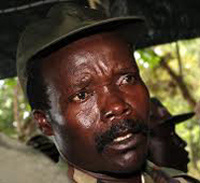“Kony 2012,’‘ the web documentary that launched a campaign to capture a brutal Ugandan warlord, has become the m

Todd Wolfson, an assistant professor in the School of Communication and Information who studies new media and social change, shared his views on “Kony’s’’ enormous appeal, its shortcomings, and its potential as model for other movements. Wolfson, who lived in Africa for six months, is co-founder of the Media Mobilizing Project, which aims to use mass communication to end poverty.
View "Kony 2012," a 30-minute documentary by Invisible Children
Rutgers Today: Why has the Kony video struck such a chord in the U.S.?
Wolfson: It plays on our emotions in much the same way as the Save the Children commercials, where you see these white middle-class people, usually women, filmed with the camera focused upward and light shining behind them. “Kony’’ uses a very similar strategy, though it goes beyond ‘let’s give a few dollars for some food’ and shifts that model to a more Occupy Wall Street moment. The technique is a call to white middle-class young people to realize the possibility of making change to what are really extreme conditions. When we see this image of supporters, it’s all white people. I really strain to see a person of color in that video.
Rutgers Today: What are your concerns about the way “Kony” is being used to rally the American public?

Rutgers Today: Do you think a film that presented some of same issues as “Kony,’’ but in a more nuanced way, would be successful?
Wolfson: I don’t think the vision of the filmmakers, or the goals of Invisible Children, which we may not agree with, precludes us from learning from this as a viral media text and figuring out how to use it in ways that we would feel more comfortable with. The question might be how do you create a viral video at Rutgers that starts a mass movement to address the deep poverty in New Brunswick or in other parts of the U.S.? We should all be putting our heads to that.
Rutgers Today: How can other filmmakers promoting a cause duplicate “Kony’s’’ success?
Wolfson: We don’t know why viral media goes viral, but what we do know about “Kony’’ is that it was very well funded. One thing that is likely is that with a lot of funding, you can create a lot of knowhow and influence 20 celebrities to get people to move things along quite quickly.
NOTE: Invisible Children co-founder Jason Russell hospitalized after public breakdown
Read Washington Post story here.